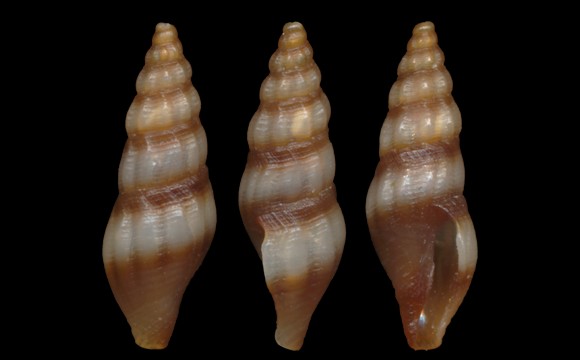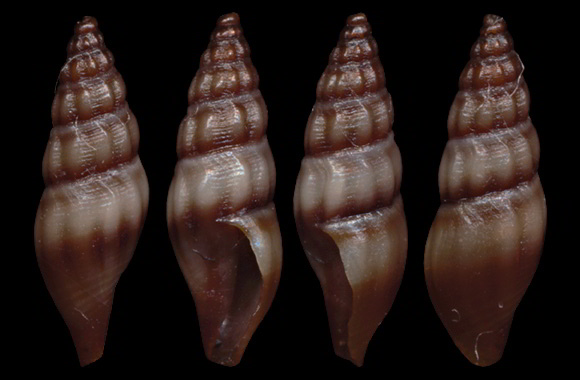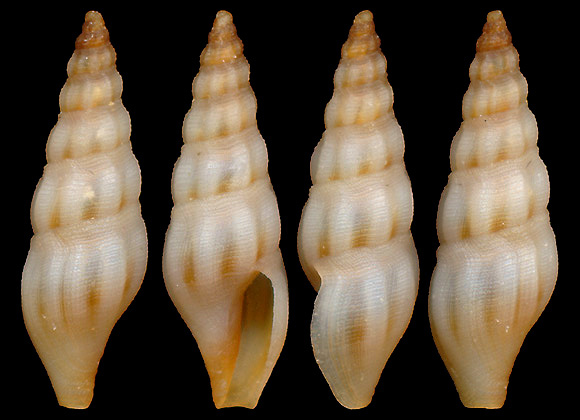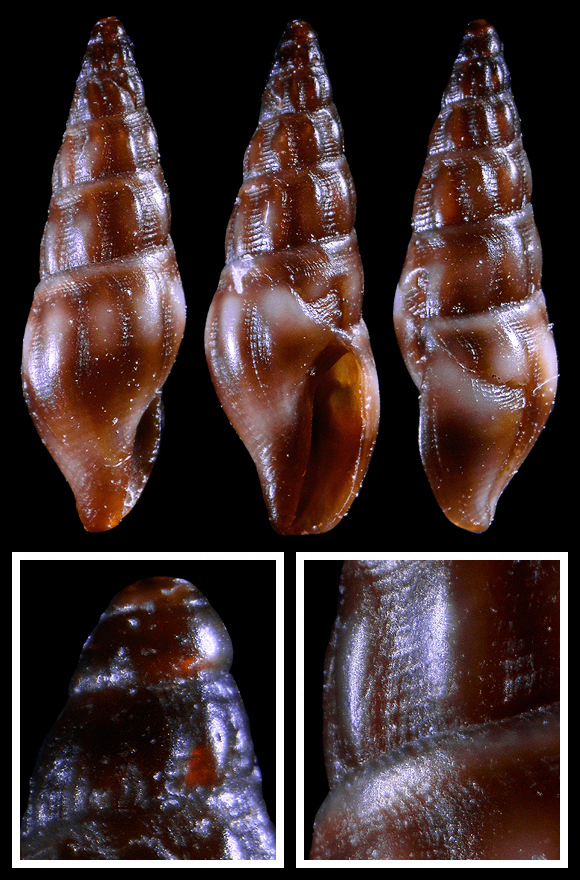
Synonym: laevigata Philippi.
« R. laevigatum. — Shell lengthened; spire sharp; whorls hardly convex; suture linear; longitudinal costae attenuated; decurrent spiral striae obsolete; colour of a light fawn with a darker band, rather large in the middle of the last whorl.
R. zonatum, nov. sp. — Contour shorter and broader; whorls more convex; suture deeper; longitudinal costae more pronounced on all whorls; decurrent spiral striae rather strong; colour of a light fawn with a large dark band in the middle of the last whorl. » – A. Locard: Les coquilles marines des côtes de France, Lyon 1891 & Paris 1892-1899, via BHL.
R. zonatum, nov. sp. — Contour shorter and broader; whorls more convex; suture deeper; longitudinal costae more pronounced on all whorls; decurrent spiral striae rather strong; colour of a light fawn with a large dark band in the middle of the last whorl. » – A. Locard: Les coquilles marines des côtes de France, Lyon 1891 & Paris 1892-1899, via BHL.
10m deep, on fine sand, Málaga, Andalucia, S. Spain. 8mm.

« Pleurotoma laevigata. — Shell spindle-shaped, having the base broader than the apex, rather solid, nearly opaque, of a dull but smooth aspect. Sculpture broad and rounded, although not prominent; somewhat flexuous longitudinal ribs, which are more or less wanting on the body-whorl and do not extend to the base or suture; […] the space below the suture is girded by a thickened rim, and is always ribless; the whole surface (except the apex) is covered with exceedingly numerous and fine spiral striae, which are crossed and indistinctly beaded by still more delicate flexuous striae in the line of growth; the spiral striaeon the body-whorl alternate in size, but elsewhere are equal; […] top whorls quite smooth and lustrous. Colour: yellow, variegated with chocolate; the former colour is more perceptible as a broad band round the upper part of the body-whorl, and on the ribs in the other whorls, the interstices of the ribs in all the whorls being of the darker colour; apex chocolate.
[…]
When the tide goes out this little mollusk burrows in the sand, but not deeply, in a slanting position; and it rises to the surface when the tide comes in, like several other univalves of similar habits. » – J. G. Jeffreys: British conchology vol. IV, London 1867, via BHL.
[…]
When the tide goes out this little mollusk burrows in the sand, but not deeply, in a slanting position; and it rises to the surface when the tide comes in, like several other univalves of similar habits. » – J. G. Jeffreys: British conchology vol. IV, London 1867, via BHL.
Le Grau-du-Roi, Gard, S. France. 7mm.

